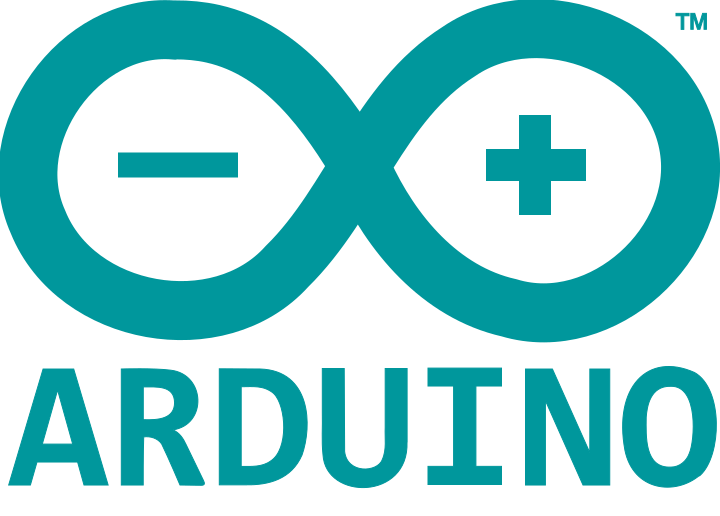Lose Your Marbles
Summary
For the Experimental Games Production module that I undertook in my second year of studying at Staffordshire University, I was tasked with creating an experimental game prototype that uses a novel game controller to give rise to a fun and interesting gameplay experience for players.
Our project culminated in Lose Your Marbles, a 3D collectathon-platformer that has the player controlling a marble-like character through a series of hazardous levels, but with a twist - the player controls the character’s every movement with their very own head!
Responsibilities were split between myself and my partner, where I mostly handled production, hardware design, and its implementation, while they focused on the game and level design.
Developing the game was not without its challenges, as we were dealing with a lot of unknowns while developing for hardware with little C++ and electronics experience, which we had to compensate with extensive research into technical solutions as a way of problem solving.
As a result of an iterative production process and effective time management, we were able to deliver a polished game and novel controller in a timeframe of just 8 weeks.
This assignment transformed how I view game design, which I can now approach holistically by placing additional value on the hardware that players use to interact with games. I can also appreciate how incredibly important it is for a game’s accessibility and overall user experience.
Demo Video
PLATFORM
Arduino & PC
TEAM
2
DURATION
8 Weeks
Platformer
GENRE
ENGINE
Unreal Engine
DOCUMENTATION
Impact
Conceptualised the game idea and owned design and implementation aspects relating to the custom game controller (including haptic feedback), player movement, polish, and the UX.
Conducted continuous research into pre-existing examples of experimental and industry games, as well as technical hardware and solutions, and applied this to our project’s development.
Upheld an iterative production process by undergoing a cycle of designing, prototyping, playtesting, and iterating, so that we could effectively adapt to player feedback.
Assembled playtest groups to conduct sufficient user testing for the game, and consulted my development partner to ensure their questions were included in the feedback form.
Championed the UX throughout the development process by ensuring that both the hardware and software had a good usability factor and met the demands of our players.
Coordinated meetings with my development partner to share the status of the project and collaborate on designs, technical solutions, and the implementation of gameplay aspects.
Prioritised and tracked tasks on Trello to ensure that we achieved our iterative milestones across the 5 weeks of active development.
Enforced good practices for project version control by establishing a GitHub repository with individual branches to organise our development efforts and prevent merge conflicts.
Communicated personal designs in the team’s Game Design Document, and created a selection of mechanic and hardware diagrams to both verbally and visually convey these designs.
Enlisted the help of a 3D Artist to create 3D models for both the player character and the custom game controller in Blender, using the designs that I had created as reference.
Liaised with the university’s 3D printing technicians to ensure that the custom game controller was printed in accordance with the planned designs.
Sourced multiple electronic components and ensured that they were compatible with our Arduino board, and that they provided the desired functionality for our custom game controller.
Delivered a midway project pitch to a class of approximately 30 students, where I showcased our game concept, USP, production schedule, contingency plans, and live demo.
Implemented additional polish at the end of development using an asset pack sourced from the Unreal Marketplace to ensure that our final deliverable was presentable for our portfolios.
Recorded the final demo video that was used to showcase our custom game controller, as well as the prototype levels that had been developed to highlight the controller’s functionality.
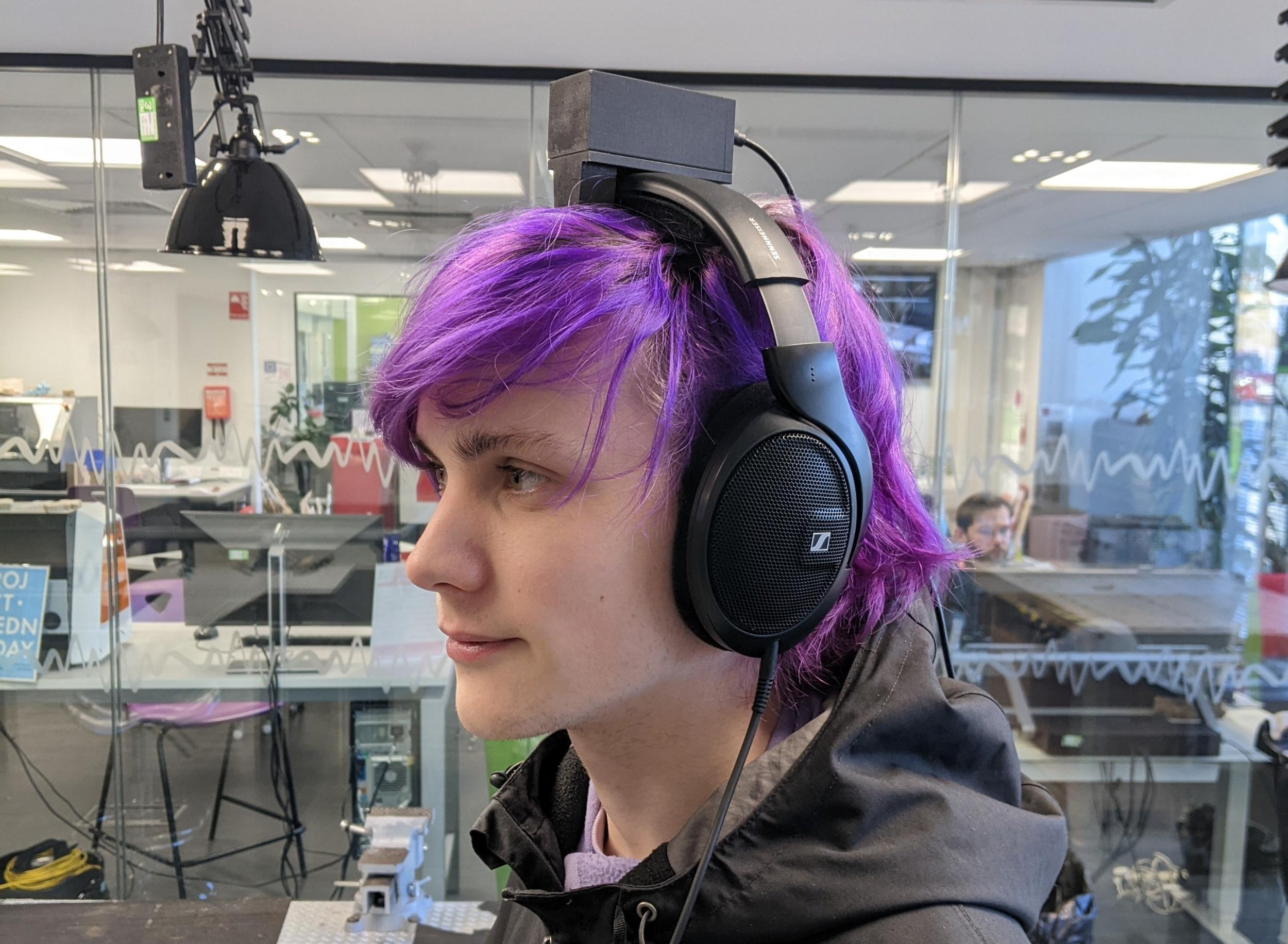
Playtester equipped with the custom game controller that has been hooked to their headset
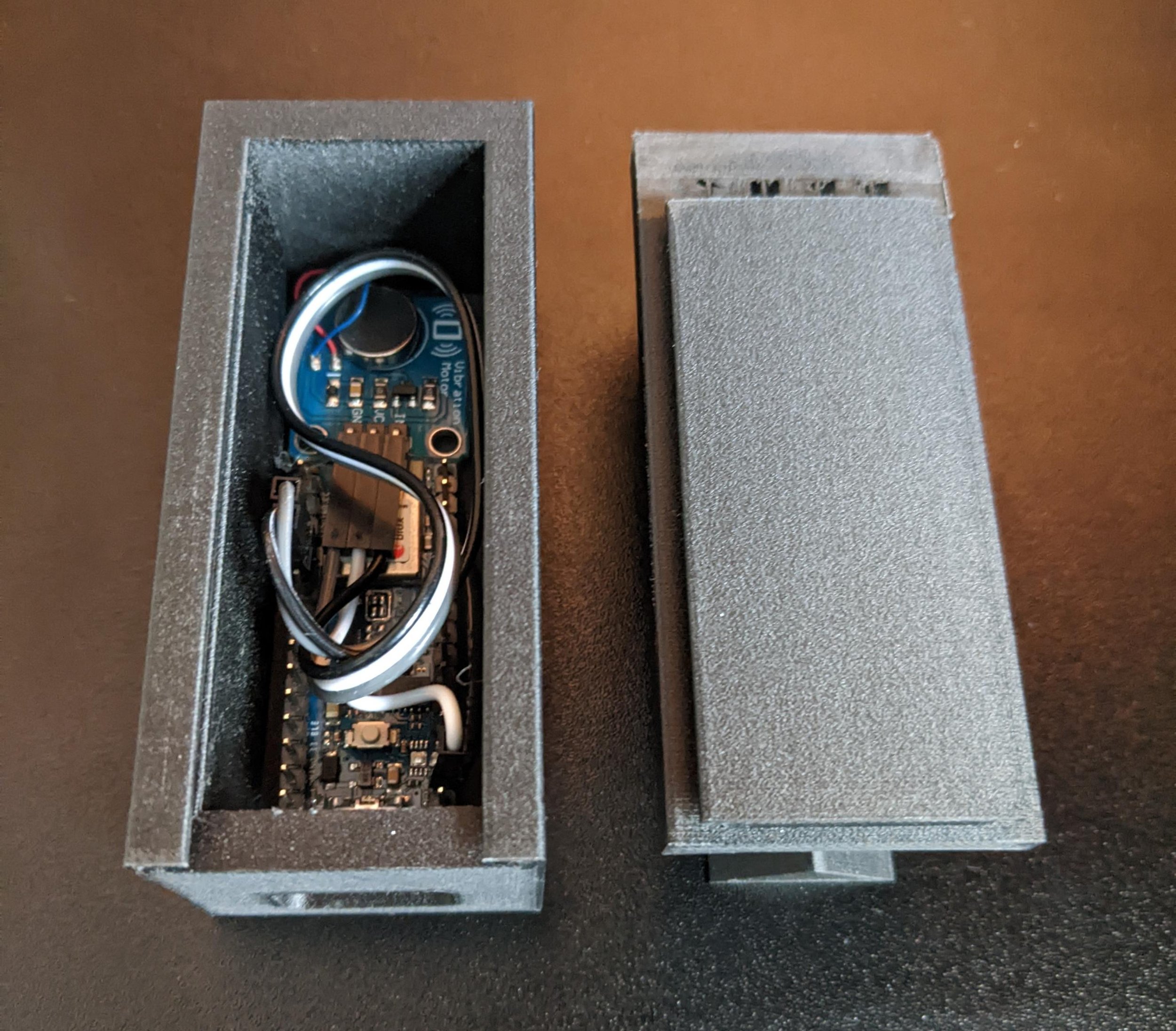
Interior of the custom game controller - revealing the Arduino 33 Nano BLE and Vibration Module

Playable character movement mechanic diagram - top view
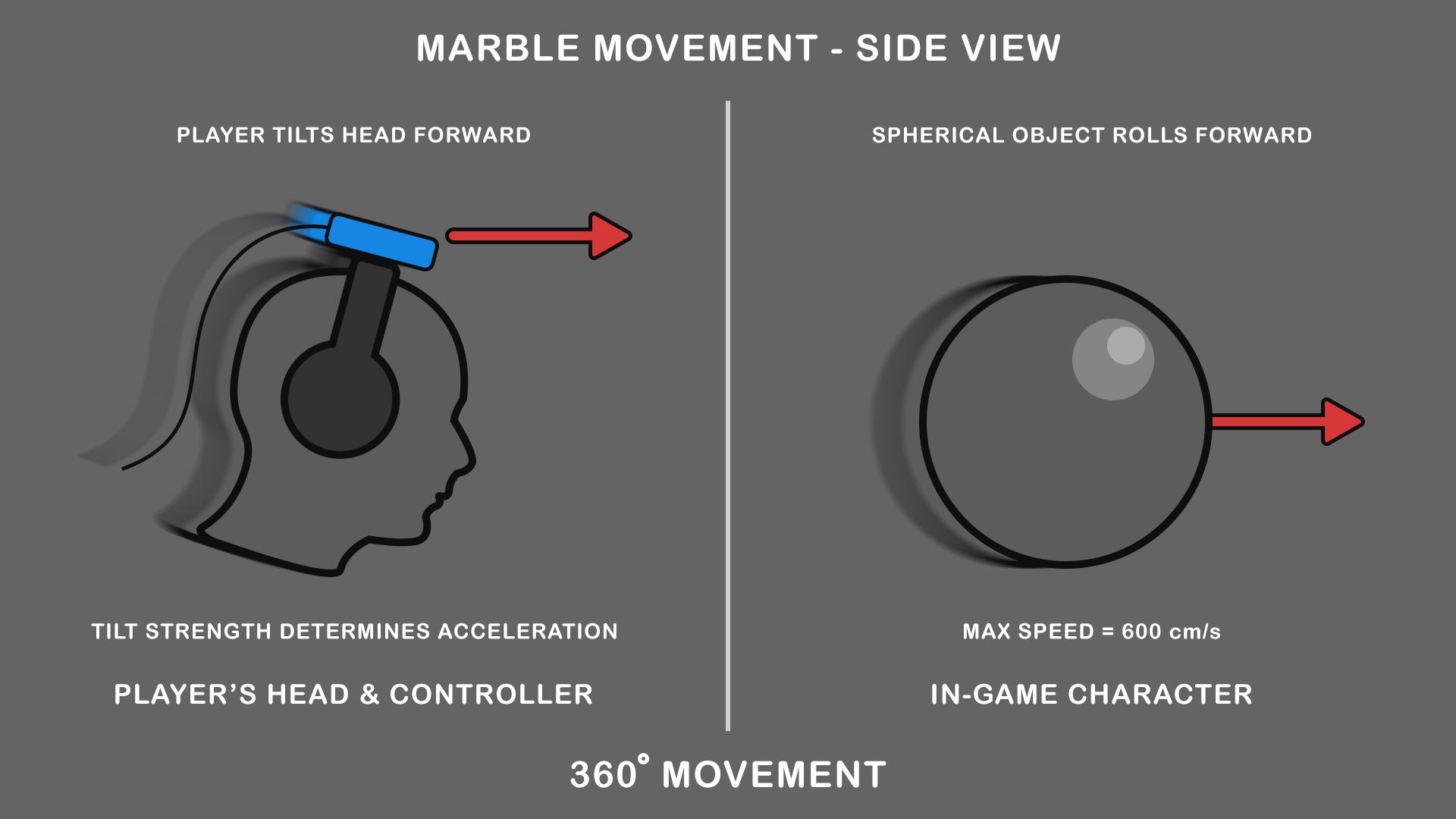
Playable character movement mechanic diagram - side view

Playable character movement mechanic diagram - jump ability
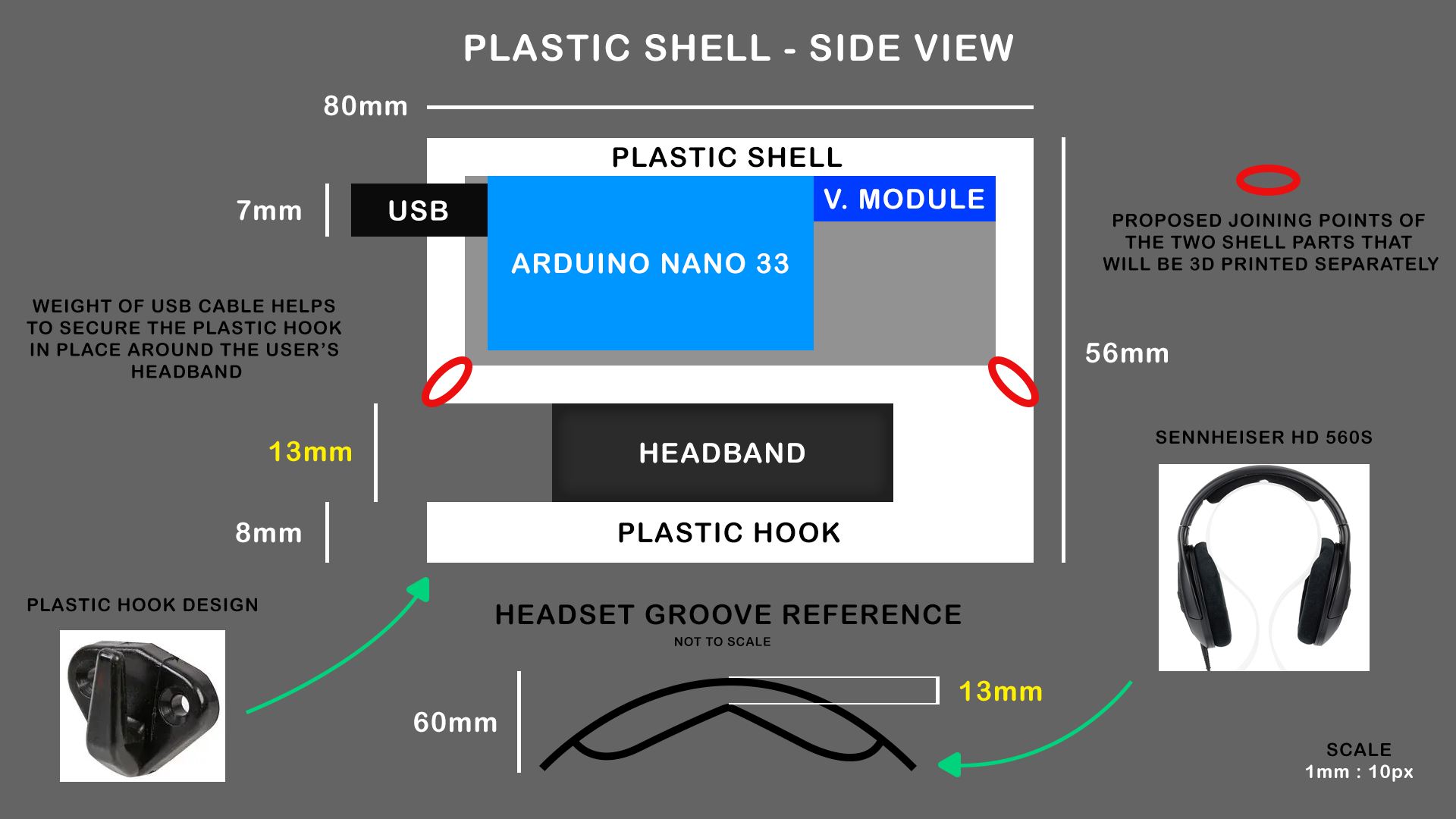
Controller specification diagram for CAD development - side view
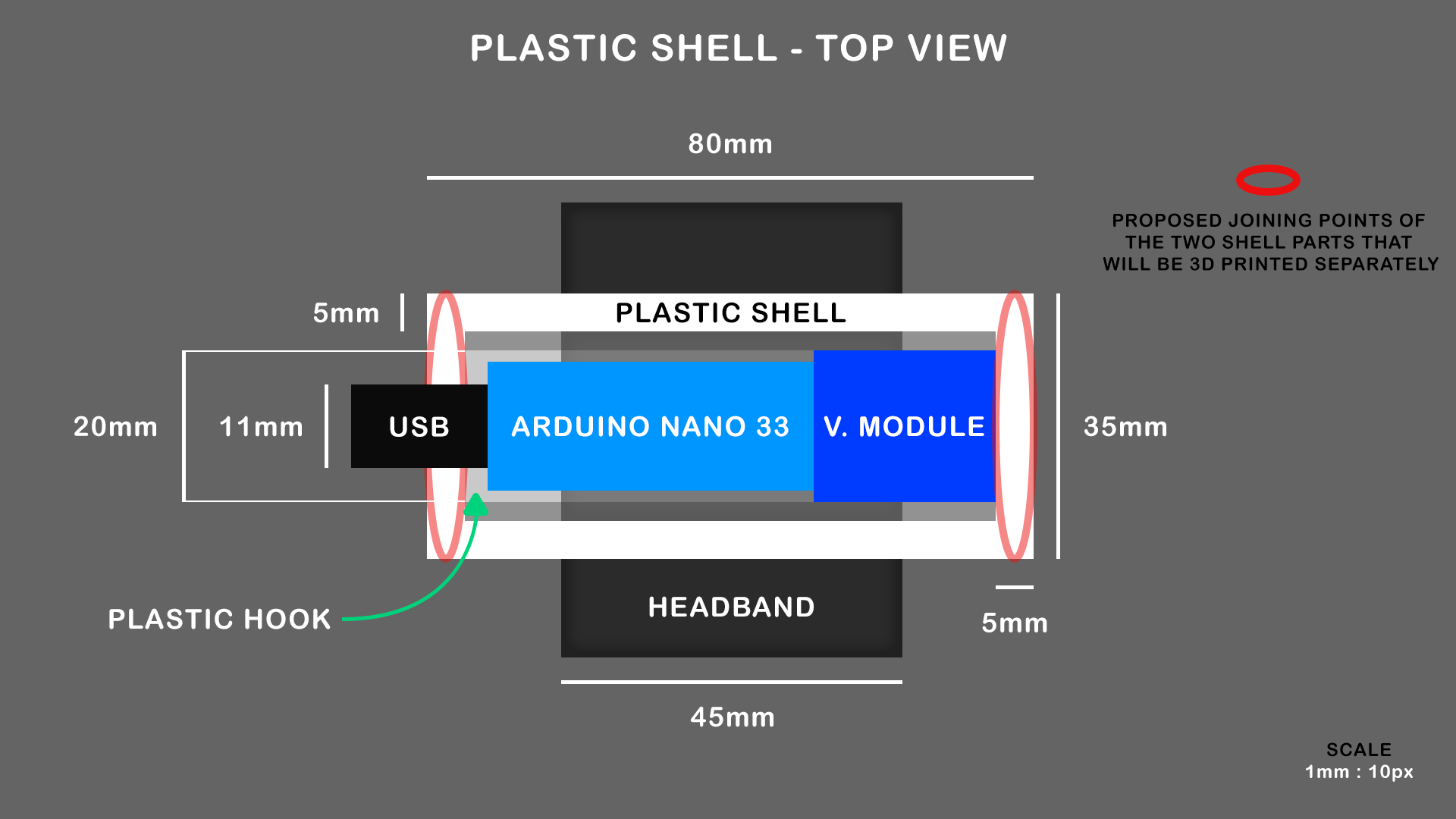
Controller specification diagram for CAD development - top view

Controller specification diagram for CAD development - front view
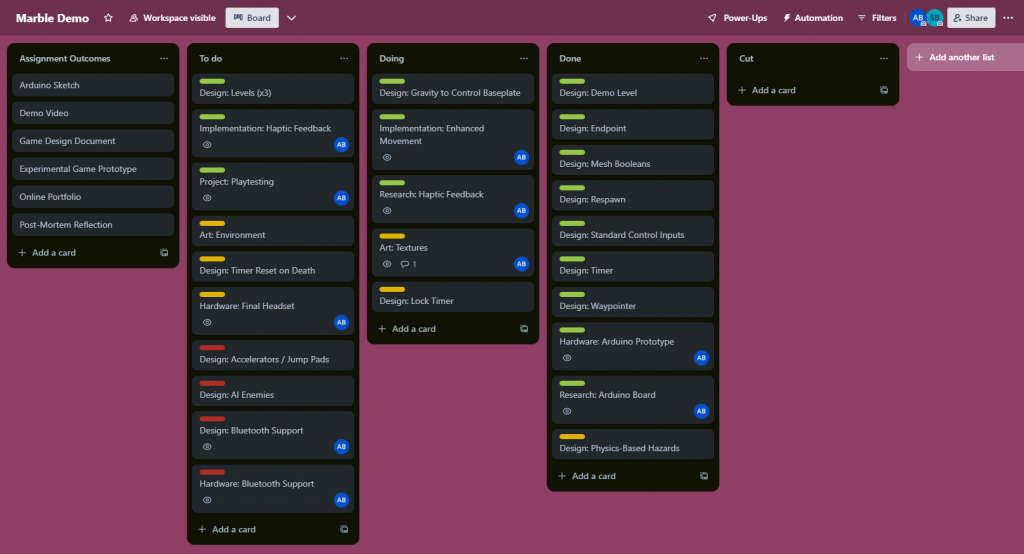
Trello task management board used and updated throughout development

Slide taken from the project pitch deck that shows our production plan
Post-Mortem
What did not go well?
Incorrect assumptions were made in relation to electronic components at times, which resulted in delays as more suitable components needed to be sourced.
A lot of time and effort was spent trying to get the earliest Arduino sketches to work without crashing Unreal Engine, until it was found that the board we used was faulty.
Presentable game visuals took too long to implement, asset packs could have been sourced earlier on to help establish our style and incorporate it into our demos.
Due to a lack of experience with GitHub, compressed files were being pushed, which caused issues in our first repository, and we had to migrate to a new one entirely.
Despite a Trello set up, since we were a team of two, it felt like we knew what we had to make without checking, and this complacency made us unfocused at times.
We were not able to find solutions in time for getting the camera to pan with the player’s movement, which was a common request from our playtesters.
Communication was patchy towards the end of the project due to overlapping module deadlines, which meant there was a rush to implement the final polish.
What did we learn?
Designing for hardware has provided a new perspective to game design and development, where I can now aim to ensure there is resonance between game and controller.
Haptic feedback and resonance between the game and controller can help to drive player engagement, as well as immersion.
An agile and iterative process is important when producing experimental games, due to the uncertainty around how features will be received by players.
Remaining adaptable is also important when dealing with a lot of unknowns, as reassessing regularly is more valuable than wide-sweeping plans in this case.
Creating hardware without much coding or electronics experience is hard, and can result in an overreliance on code dumps while not fully understanding its contents.
3D printing is not as daunting as previously thought, so long as the scaling factor is adjusted between software, it is simple to create professional 3D prints for projects.
When working in small groups, there is greater importance on finding development partners that complement each other’s skills to prevent impediments.
What went well?
We were successful in delivering a novel controller that is showcased by a fun and polished game experience.
Steady progress was made each week as we hit every development milestone that we had set for ourselves.
We were able to stick to our scope by not spreading ourselves too thinly, and having an early production plan helped to protect ourselves from feature creep.
Once we had designs and prototypes ready to test, we were able to conduct regular playtests to check if our experimental gameplay was resonating with players.
We remained agile by adapting to the player feedback that we received and underwent an iterative production process to improve our experience with UX in mind.
Extensive research that was front-loaded, explorative, and dynamic helped us at each stage of development to make informed decisions and problem solve on the fly.
The game was built with modularity in mind, so it could continue to be developed in the future, such as creating more level packs to introduce new gameplay challenges.
Grown as game developers by accounting for hardware and the relationship that has with gaming software.
Software
Credits
-
Alex Briggs - Producer, Designer (Controller, Player Character, UX)
Kit Broderick - Designer (Game, Level, UI)
-
Tom Bloomfield - 3D Artist & Playtester
Leonard Stuart - Playtester
Sidney Impey - Playtester
Adam Martin - Original Arduino Sketch
Kevin MacLeod at Free Music Archive - Music
Pixabay and Universfield at Pixabay - Sound Effects 1, 2, 3
Scale X at Unreal Marketplace - Environment Asset Pack






